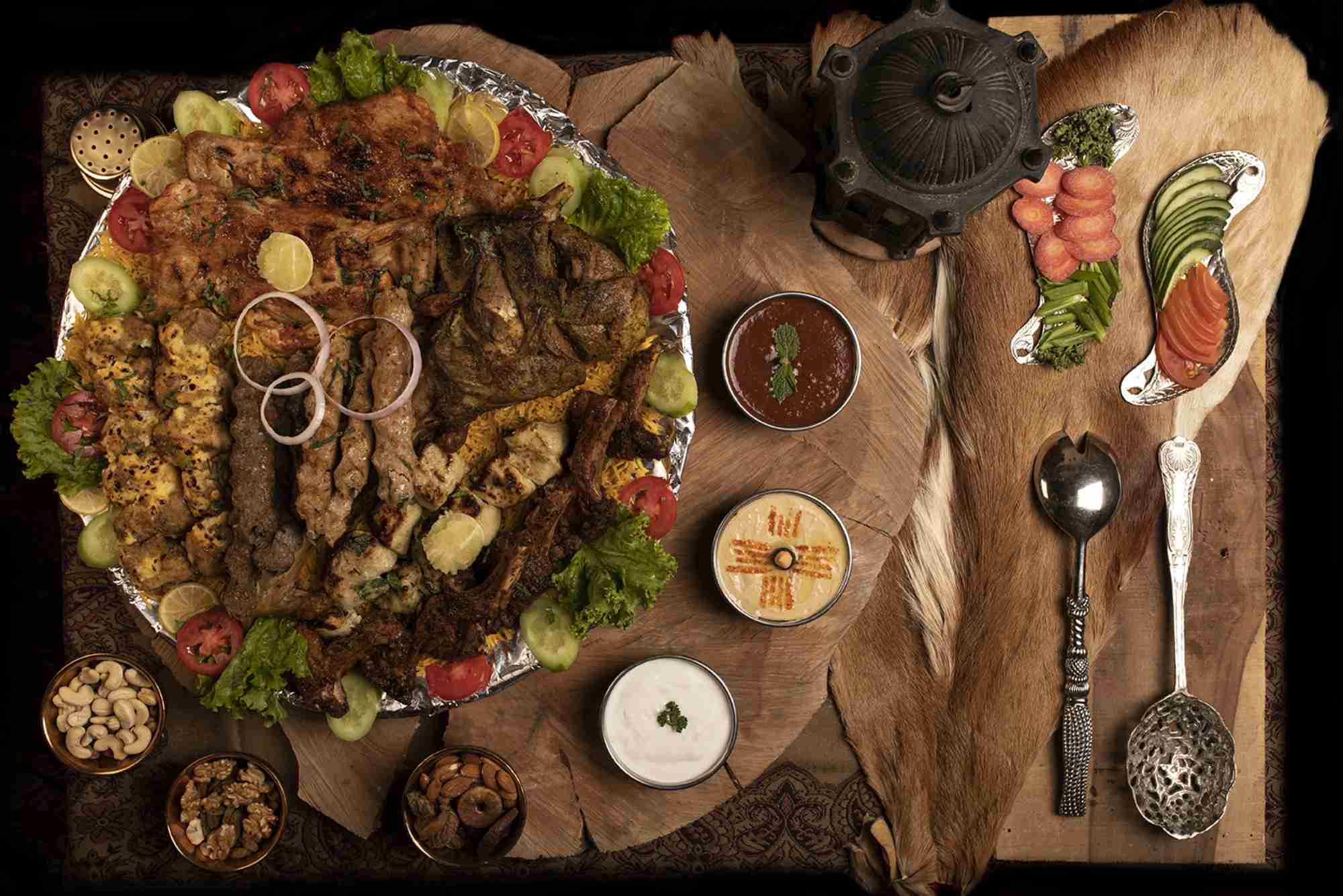Popular Arabic Food Names and Their Meanings
Arabic cuisine is a flavorful journey rooted in centuries of history, tradition, and cultural pride. From aromatic spices to mouthwatering dishes served at family gatherings, every item has a name rich in meaning. Understanding Arabic food names not only helps you navigate menus and cookbooks—it opens a window into the region’s rich culinary heritage. In this guide, we’ll explore the meanings behind the most beloved Arabic dishes, offering insights into both language and flavor.
The Cultural Significance of Arabic Food Names
Food names in the Arab world are more than just labels. They are reflections of geography, tradition, ingredients, and even history. Many Arabic food names hint at how the dish is prepared, the main ingredient used, or the region where it originated. For example, a dish named “Maklouba” (literally meaning “upside-down”) refers to the cooking technique where the pot is flipped before serving. These names tell stories, preserve customs, and represent identity.
Understanding these meanings can deepen one’s appreciation of Middle Eastern cuisine. Whether you are a traveler, food enthusiast, or just curious, this knowledge will enhance your experience and help you connect more meaningfully with the culture.
Iconic Arabic Food Names and What They Mean
Mansaf
Mansaf is a traditional Jordanian dish made of lamb cooked in fermented yogurt and served over rice. The word “mansaf” comes from the Arabic root “nasafa,” which means “to destroy” or “to blow away.” Symbolically, it refers to a feast so generous that it overwhelms or “destroys” hunger. This dish is often served at weddings, religious celebrations, and national holidays.
Hummus
Hummus, a creamy blend of chickpeas, tahini, lemon juice, and garlic, is a staple across the Arab world. The word “hummus” simply means “chickpea” in Arabic. Its simplicity in name mirrors its ingredients, yet its global popularity speaks to its depth of flavor and versatility.
Mandi
Mandi is a traditional dish from Yemen, now popular throughout the Gulf. It features spiced rice and meat, usually cooked in a tandoor or underground oven. The term “mandi” is derived from the Arabic word “nada,” meaning “dew,” referring to the moist, tender texture of the meat after being slow-cooked. It embodies hospitality and celebration.
Falafel
Falafel, those crispy balls made of ground chickpeas or fava beans, is a favorite street food. The name is likely derived from the Arabic word “filfil,” meaning “pepper.” While the modern dish may not always be spicy, it’s packed with bold flavors and symbolizes the humble yet satisfying aspects of Arab cuisine.
Shawarma
Shawarma is a rotating spit-grilled meat dish, commonly wrapped in pita bread with garlic sauce and pickles. The name comes from the Turkish word “çevirme,” meaning “turning,” which was borrowed into Arabic. Shawarma highlights the cultural cross-influences between Arabic and neighboring cuisines.
Maqluba
Maqluba, meaning “upside-down,” is a rice-based dish layered with vegetables and meat, then flipped upside-down before serving. The name reflects its dramatic presentation. This Levantine specialty is deeply symbolic of transformation and abundance.
Kibbeh
Kibbeh refers to a family of dishes made from bulgur wheat, minced onions, and ground meat. The word comes from the Arabic root “k-b-b,” meaning “to form into a ball.” It represents both everyday meals and festive occasions, thanks to its various forms—fried, baked, or raw.
Mujaddara
Mujaddara is a simple yet hearty dish of lentils and rice topped with caramelized onions. The word “mujaddara” means “pockmarked,” a reference to the scattered lentils among the rice. It’s a classic comfort food found across Lebanon, Syria, and Palestine.
Baba Ghanoush
Baba Ghanoush is a smoky eggplant dip made with tahini, olive oil, and garlic. “Baba” means “father” and “ghanoush” loosely translates to “pampered” or “coquettish.” While the origin of the name is uncertain, many believe it refers to a legendary figure who loved the dish. Its playful name adds charm to its already luxurious flavor.
Kunafa
Kunafa is a beloved dessert made with shredded filo pastry or semolina dough, soaked in syrup, and layered with cheese or cream. The name is believed to derive from the Arabic word “kanafa,” meaning “to shelter” or “to wrap,” which relates to how the pastry envelopes the filling. It’s commonly served during Ramadan and festive occasions.
Fattoush
Fattoush is a fresh salad made from toasted or fried pieces of flatbread mixed with vegetables and herbs. The name is rooted in the word “fatteh,” meaning “crumbled” or “broken bread.” It’s a perfect example of resourcefulness, using leftover bread to create a delicious dish.
Tabouleh
Tabouleh is a refreshing salad made with parsley, mint, tomatoes, and bulgur. Its name comes from the Arabic word “taabil,” meaning “seasoning.” The focus on herbs and lemon juice makes this dish not just a salad but a palate cleanser and a healthful companion to heavier fare.
Musakhan
Musakhan is a Palestinian dish of sumac-spiced chicken served on flatbread with caramelized onions. The word “musakhan” means “heated” or “warmed,” referencing the cooking method and the comforting nature of the dish. It’s a staple during olive harvest season.
Harees
Harees is a porridge-like dish made from wheat and meat, slow-cooked until creamy. The name comes from the verb “harasa,” meaning “to mash” or “to crush.” It’s traditionally served during Ramadan and Eid, symbolizing nourishment and unity.
Qatayef
Qatayef is a stuffed pancake filled with nuts or cream, usually served during Ramadan. The word is derived from “qataf,” meaning “to pick,” likely referring to how they are hand-picked and served individually. Their festive nature makes them a Ramadan favorite.
Dolma
While often associated with Turkish or Persian cuisine, dolma is also common in Arab regions. It refers to stuffed vegetables—grape leaves, zucchinis, and more. The name “dolma” means “stuffed,” and its presence in Arabic cuisine reflects the historical blending of food cultures in the region.
Why Arabic Food Names Resonate Globally
Arabic food names carry with them the warmth, hospitality, and shared traditions of the Middle East. As these dishes gain global recognition, the meanings behind their names travel with them. When someone enjoys a bowl of “mujaddara” or a plate of “shawarma,” they’re also tasting history, language, and identity.
Moreover, these names often remain untranslated on international menus. That choice reflects a growing appreciation for authenticity and linguistic preservation. Instead of reducing them to descriptions, people want to know and say the real names. That shift creates opportunities for cultural exchange and understanding.
Discover the Meaning Behind the Meal
Exploring Arabic food names reveals more than just what’s on your plate. It uncovers the deep connection between language, tradition, and flavor. These names reflect stories, preparation methods, and cultural identities that have been preserved through generations. Whether you’re enjoying hummus in a café or preparing maqluba at home, knowing the name’s meaning adds depth to the experience. So next time you savor a dish with an Arabic name, take a moment to appreciate the history and heritage it carries. Want to learn more about Middle Eastern food or try your hand at traditional recipes? Start with one of these iconic dishes and let the language of food guide your journey.
FAQs
What is the most famous Arabic food?
Hummus and shawarma are among the most globally recognized Arabic foods, known for their flavor and accessibility.
Why do Arabic food names often describe the dish?
Arabic food names commonly describe preparation methods, ingredients, or appearance, reflecting the importance of transparency and storytelling in the cuisine.
Is Arabic food healthy?
Yes, many Arabic dishes use fresh vegetables, lean proteins, legumes, and olive oil, making them balanced and nutritious.
What does “Maqluba” mean in Arabic?
“Maqluba” means “upside-down,” referencing the way the dish is flipped before serving.
Are Arabic food names the same across all Arab countries?
Not always. While many dishes are shared, names and preparations can vary slightly between regions due to dialects and local traditions.




